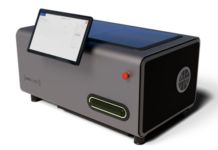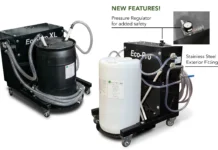In our rapidly changing world, it pays to stay abreast of developments that might require adjustments in the workplace. Here are five emerging topics to keep in mind when it comes to making the workplace the best place.
Shift Work Can Take a Toll on Workers’ Brains
Researchers in Canada conducted a study of middle-aged and older workers, evaluating data for thousands of workers between 45 and 85 years old. The study looked at work schedules, employment experiences and cognitive-tracking test results. Of the approximately 20% of study participants who had done shift work during their careers, two startling trends came to light.
The people whose current job included working the night shift had a 79% higher rate of impaired cognition than their day-shift-only peers. Those who reported having worked night shifts on the job that they held longest in their careers showed a 50% higher rate of cognitive impairment.
The key may be disruption of the circadian rhythm, which can be thrown off by shift work schedules. To see the study results, visit https://journals.plos.org/plosone/article?id=10.1371/journal.pone.0289718.
Shift Work Can Disrupt Women’s Fertility
In addition to taking a cognitive toll, shift work may be the source of fertility problems in female workers. A team of researchers put female mice on a month-long schedule that manipulated the light patterns in their environment to mimic the shifting light-dark cycle experienced by workers who rotate shifts. For the mice, the regimen resulted in their pituitary glands ceasing to release the hormone that triggers ovulation. An out of whack day/night environment, it seems, keeps mice from becoming fertile.
As with the findings about shift work affecting brain function, the fertility impairment seems to be tied to the circadian clock. Researchers will continue to study how shift work – and circadian rhythm disruption – can affect childbearing, and to discover preventive measures and therapies to reduce the effects. In the meantime, take these findings into account for workers and especially for workers who are eager to start a family or have another child.
This study was presented at the 25th European Congress of Endocrinology.
Protect Workers from Wildfire Smoke
In 2023, wildfires in the US and even those in Canada led to smoke-filled skies, orange sunsets or noticeable haze for many Americans. One of the main hazards from wildfire smoke is exposure to particulate matter, which causes eye irritation and respiratory tract problems, and can contain heavy metals. The tiny particles of charred material can be breathed in and affect the heart, kidneys and lungs.
OSHA urges employers to keep workers safe when wildfire smoke is detected through a number of measures, including reducing workers’ physical activity and especially any strenuous work, providing smoke-free places for work and breaks, beefing up HVAC systems and air filters to ensure smoke-free work areas, and allowing or providing NIOSH-approved respirators for employees (with proper adherence to OSHA’s Respirator Protection Standard).
For more information and resources, visit http://osha.gov/wildfires and the NIOSH webpage on wildfire smoke exposure at https://www.cdc.gov/niosh/topics/firefighting/wffsmoke.html.
Micro-breaks – Just Five Minutes Makes a Difference
A research team at the University of Sydney found that a five-minute break can really rest the mind and give someone doing a complex task a measurable mental boost. The researchers tasked college students to complete a 20-minutes-at-breakneck-speed math test. After that, some students immediately moved on to a mathematics study lesson. Others got a five-minute unstructured break before moving on to the study lesson. The remainder watched a short video of a rainforest before beginning the study lesson.
After completing the study lesson, all of the students were surveyed about their ability to concentrate or their level of distraction during the study lesson. The students then took a 20-question problem-solving math test.
The survey and test results were revealing: the students who had a five-minute unstructured rest were able to pay more attention during the lesson following the break, and they and the students who watched the rainforest video did better on the problem-solving test than the students who did not have a break.
Bottom line – It pays to take a true break, even for five minutes, in the midst of an extended brain-wracking endeavor. And, as one of the researchers said, “Scrolling through social media does not count as rest.”
To see the study report, visit https://www.tandfonline.com/doi/abs/10.1080/20590776.2023.2225700?journalCode=rdvp20.
Know 3D Printing’s Health Hazards
Everybody and their cousin’s dog is getting into additive printing. Now, while the practice is fresh and new, is the best time to learn about the health hazards of using this technology and to take measures to keep workers safe.
Researchers at the Chemical Insights Research Institute found that 3D printing can emit ultrafine particles and VOCs. Over 400 VOCs were measured, including xylenes, formaldehyde, acetaldehyde, nonanal, decanal, 2-butenal, D5, octamethylcyclotetrasiloxane, dodecamethylcyclohexasiloxane, toluene, ethylbenzene, trimethylbenzene, methyl methacrylate, THF, cyclohexanone and 2-butanone.
The Institute developed a standard for testing and assessing 3D printing emissions. Get the ANSI/CAN/UL 2904 standard test protocol at https://chemicalinsights.org/wp-content/uploads/2022/04/3DPrint_Standard_Brief_Version-2.pdf





